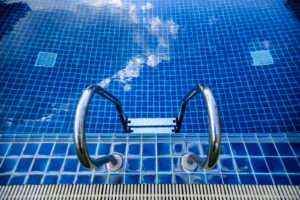
If you are an aquagym coach and would like to give classes, but you would like to have additional information before you start?
It is important to consider your options for where you will teach.
Should you work in a public or private pool?
Both offer different advantages and disadvantages, so let’s look at them from an objective “aquafitness” perspective.
Give courses in public pools

It’s all about adapting to your environment, and one of the drawbacks is that it’s not always guaranteed that participants will take their work seriously. They may just be there to have a good time and engage in conversations during your performance, which can be detrimental to the effectiveness of the teaching. In addition, you will not only have to work with varying levels of attention from your students.
In a public pool, the goals contrast sharply with those of private pools.
Private pools focus on filling classes and keeping their members loyal.
While public pools do not have the same profit motive, otherwise they would need hundreds of members per hour. The low entry cost of public services means that resources have to be used in a more generalized way, i.e., limiting the deficit. This leads to different expectations regarding sustainability. Because they are mostly in deficit, their objective is to be and remain a public service.
Give courses
In a private pool:

The quality of your services will depend on its life span. Therefore, the profitability objectives of your services are a priority. To continue to sell its memberships much higher (in view of their operating costs and their profitability objectives).
On the other hand, in a private club, your only and main task is to be good.
In a public pool, you probably have a few hours of supervision to do before and after your classes, and you need to keep your energy up for optimal swimmer attention. Avoid any risk of being held liable in case of an accident.
Without mentioning the possible and unimaginable interactions with the more or less pleasant taxpayer.
This is undeniably different from private club clients.
And this alone explains most of the difficulties of working in a public aquatic environment.
Private and public pools: differences

They play an important role in providing access to recreational activities such as swimming, aquafitness and aquabike activities for people of all ages and abilities.
It is indispensable to note that there are distinct differences between these two types of facilities in terms of goals and expectations for sustainability. Whether it is due to financial constraints or limitations of resources available in each type of pool.
Private pools tend to be safer in terms of diversity. Because of their willingness to seek innovation to generate revenue through membership fees or additional services offered.
In contrast, most public facilities rely heavily on government funding to stay “afloat” financially over the long term. It is therefore essential that institutions prioritize the investment of resources in public pools so that everyone has access to these spaces in which to swim!
And you give the possibility to join the public service after some years of more or less varied contracts (temporary, seasonal …).
Thank you for your reading.
Aqua Coach : The blog
Leave a Reply Cancel reply
You must be logged in to post a comment.




